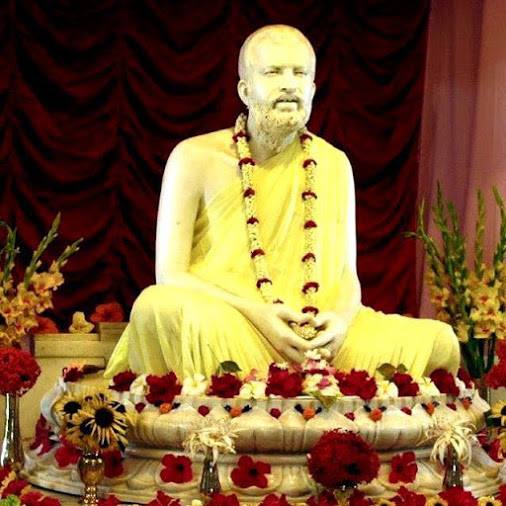The Cosmic Mystery - 3. Swami Krishnananda.
==================================================================================
================================================================================
Wednesday, March 23, 2022. 06:00.
The Cosmic Mystery -3.
=================================================================================
It is necessary to dispel certain misconceptions regarding the nature of Maya, for it is held by many that the principle, instead of establishing the oneness of Brahman, creates a dichotomy in existence by its presence. As it was observed before, the term is used in different senses, to suggest the absoluteness of Brahman and the inscrutability of phenomena. Maya is not altogether non-existent (Sunya), for a void, cannot become an object of consciousness; but Maya has a capacity to appear in manifold forms. It does not also signify a self-contradictory assumption like that of a barren woman's son or a round square, for such fancied things as these cannot even be conceived. But the effects of Maya not only present themselves before the individual but exert a control over it. The Jiva is a part of the world of Maya, and is not the cause of it. The acceptance of Maya does not annul the existence of a world external to consciousness. The theory is not analogous to the Vijnanavada school of Buddhism, as it is generally understood, according to which the world is an objectification of subjective cognitions or a perception of the externalisation of the series of the flow of individual consciousness which is of a momentary nature. It is not to be supposed that the introduction of the principle of Maya to account for the world can in anyway lead to the untenable position of subjective idealism. The theory of knowledge, proposed by Mayavada, accepts Anirvachaniyakhyati (indescribability), and not Asatkhyati (non-existence) or Atmakhyati (subjectivity). The object of knowledge is neither a nihil nor a projection of the internal cognitions. The object is held to be an indescribable appearance, as it cannot be considered either as object or as unreal. There cannot even be an appearance of externality if there were no substratum for such an appearance. When we perceive a table or a cloth, we do not regard it as forms of our own thoughts or feelings but as things independent of us as perceivers. Though, the objects cannot claim to have an ontological status of their own, they have an empirical existence and psychological independence which points to a real though unperceived basis behind them. When we regard the world as Maya, what we mean is that it has no validity of its own as absolute truth and not that it never appears to us, or that it is real enough to vitiate the Infinite.
It has been regarded that the theory of Maya creates an unnecessary difference between Saguna-Brahman and Nirguna-Brahman, while, in fact the two have to be brought together and reconciled. The criticism is really without a basis, for the alleged dualism is never intended. Brahman is either Nirguna, or Saguna, or both, or neither. If it is Nirguna essentially, its Saguna aspect must be accidental, brought about by causes extraneous to it. This would mean that Brahman is not really Saguna but Nirguna. But if Brahman is really Saguna, its Nirguna aspect should be alien to its essential nature. To suppose, then, that Brahman is also Nirguna would be to imagine it in a state not its own. And whatever does not belong to it cannot be considered to be eternal. Thus the Nirguna aspect would be non-eternal. If, on the other hand, Brahman is to be regarded as both Nirguna and Saguna, we would be speaking what we are not able to defend for one thing cannot be two things at one and the same time. If, again, it is said that Brahman, on account of its infinite power, can assume both forms, though unintelligible to us, it means that the real nature of Brahman is neither Nirguna nor Saguna, but beyond both. Thus, again, we are led to the non-dualist position, where the question of the reconciliation of the Saguna and the Nirguna aspects of Brahman does not arise. And if it is neither of these, it must be something different, which, again, would mean that it is one without a second.
It is argued that the world is a real Self-manifestation of Brahman, a creation of its consciousness-force, and that it is not unreal in any sense. If Brahman has really become the world, it has undergone a modification in its essence, and thus has ceased to be what it is. We are driven here to the difficult position of the doctrine of Parinamavada (real transformation). There would be no Brahman left to be realised by souls if it has already become the world by self-transformation. But if it has not really modified itself into the world, the world is other than Brahman, and thereby loses its being – it becomes an appearance. That which does not belong to Brahman, but yet seems to exist, is what is designated by the term Maya. It cannot be said that the world, as we know it, is in Brahman, or belongs to Brahman, for the mortal nature of the former can in no way be extended to the immortal. The world is not also something existing unrelated to Brahman, for, then, it would limit Brahman, and consequently deny it. Even supposing that Brahman has become the world in a manner transcending our logic, we have to admit that Brahman alone is, for the reason that consciousness does not admit of divisions in it. The consciousness of division has to be divisionless.
It is said, again, that just as there is continuity in the perceptions of the imagined snake and the rope, a real relation between the world and Brahman cannot be denied. It is evident that the supposed continuity between the states of the snake and the rope is not in the perceptions, but in a substratum common to both. The Adhishthana or the support of the snake and the rope is one, and it is on account of this fact that one is able to perceive the two in one and the same locus, at different times. There is no continuity between the forms of the perception of the snake and the rope, for the former are negatived in the latter, and the suggested relation is only due to the consciousness present as the substrate of both the forms of perception. The world and Brahman, therefore, are one in the sense that the essence of both is consciousness, but it does not mean that the perception of the world by itself has any relation to the realisation of Brahman.






.jpg)



Comments
Post a Comment